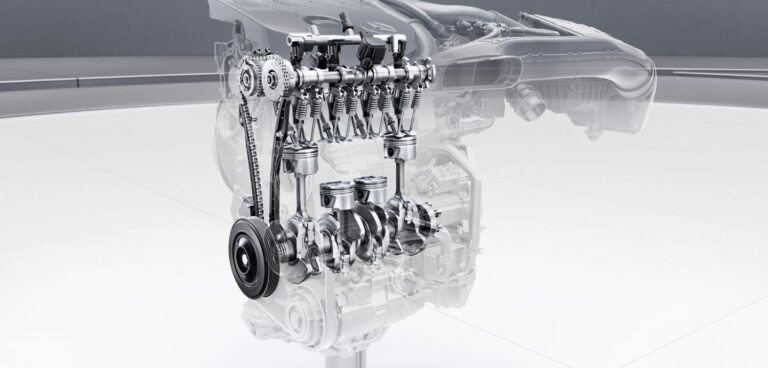Daimler and Renault have further strengthened ties via the joint development of two new four-cylinder engines. The M 282 gasoline and OM 608 diesel units have been designed to offer greater efficiency
Available at market launch, the new entry level 1,332cc M 282 engine in the A 200 will offer 163ps and include cylinder shut-off when bolted to the 7G-DCT transmission. This means that, when compared to the previous 1.6-liter powerplant, the output per liter of the all-aluminum engine has been increased by 25%.
The Mercedes-Benz engine is the auto maker’s first four-cylinder to feature cylinder shut-off. In the partial load range between 1250rpm and 3800rpm, and depending on the power requirement, the intake and exhaust valves of the second and third cylinder are closed by valve clearance adjustment.
The M 282 also includes a turbocharger with an electronically controlled wastegate meaning that thanks to flexible charge pressure control, it is also possible to set an optimum charge pressure under partial-load conditions.
The M 282 is produced at the Kölleda plant in Thuringia, Germany, and Renault supplies the components of the long block engine.
Also new is the four-cylinder diesel OM 608. Based on the OM 607, the A 180 d powertrain will develop 117ps and 260Nm of torque. While power is up from the previous iteration, the 1461cc motor now has reduced emissions to comply with Euro 6d-temp emissions standards including the new requirements relating to RDE.
To achieve this, the OM 608 is equipped with high- and low-pressure exhaust gas recirculation. The compact exhaust aftertreatment system is near-engine mounted. Alongside the oxidation catalytic converter and the particulate filter, SCR catalytic converters with AdBlue metering are used for the first time in this engine class.
New technological components for the diesel engine include an improved turbocharger with variable turbine geometry integrated into the exhaust manifold. An electric actuator now adjusts the turbine geometry. Together this makes for a more immediate charging response. The intake air is now cooled by an engine-mounted water intercooler.
The cast-iron engine block has also been made lighter, while increasing its rigidity. Weight-optimized steel pistons are used as before. A demand-controlled oil pump has also been included, with a pressure regulating valve adjusting the oil pressure on the basis of need and temperature-dependent characteristics maps.
While the OM 608 was also developed as part of a strategic cooperation with Renault, Mercedes-Benz provides multiple specific technology components including the engine mounting, the two-mass flywheel and engine control unit with specific software.


